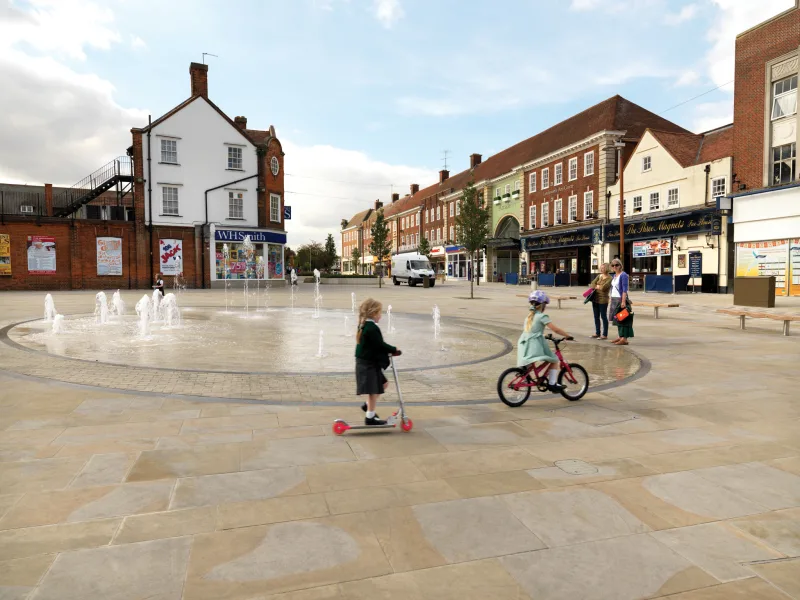A lasting legacy of the pandemic is likely to be the way our towns and cities are designed. More space to move around on foot, an increase in outdoor dining and socialising and a general shift towards placemaking that focusses on active travel and wellbeing. These are developments that have long been on planner’s agendas, but they have moved up the priority list in recent months and rightly so.
But making such improvements to busy centres is not a new thing, and it is often worth re-visiting what has gone before to inspire future thinking.
In this article we share three regeneration projects which transformed the way people use public space, all with links to more photos and details too.
Bond Street – A regeneration project to improve the pedestrian experience
Public realm enhancements along Bond Street in London aimed to prioritise pedestrians and focus on improving the visitor experience. Working for Westminster City Council, in partnership with the New West End Company, and Transport for London, Architects Publica developed an elegant and unified design alongside traffic and transport specialists Norman Rourke Pryme and highway engineers WSP. The design, delivered by FM Conway-WSP, put pedestrian’s needs centre stage, with widened footpaths and seating, new paving and better pedestrian crossings. Tree planting and lighting complemented the design, which also enhanced the connections into the neighbouring areas of Mayfair and the West End. Find out more, and see more photos on our project case study.
WSP, New Bond Street - Progress - 2017 12 - H264 from Publica Associates on Vimeo.
Letchworth City Garden – creating a pedestrian friendly town centre

Landscape architects LDA Design were given the brief by Letchworth Garden City Heritage Foundation to improve and enhance a substantial area within the town centre. This major regeneration project involved the creation of a pedestrian-friendly town centre, which included the realignment of the carriageway and reversal of the traffic direction along one of the main streets.
The highway changes enabled a new public space to be created as a gateway to the town centre. The existing town square was also improved, and new water features and sculptures were added to create interest. The project not only had a positive impact on the local economy, but created a better visitor experience and encouraged people to spend more time enjoying the environment.
See more photos and find out more about the scheme, including Marshalls’ involvement, in our case study.
Brentford – town centre improvements to be more welcoming for pedestrians and cyclists

Brentford’s award-winning ‘Making the Connection project created a town centre that was more welcoming for pedestrians and cyclists and improved public spaces and the town’s connection with the River Brent. The project, designed by Kinnear Landscape Architects for London Borough of Hounslow, refreshed the public’s understanding of the market town and its connection to the water by providing new connections and routes alongside it. Also within the scheme was a new market place square for which Marshalls supplied the paving. With an eagerness to remain loyal to the town’s heritage, 70% of the original Yorkstone paving was recycled and re-used across the scheme. You can find out more about this, and see more photos in our case study.Brentford’s award-winning ‘Making the Connection project created a town centre that was more welcoming for pedestrians and cyclists and improved public spaces and the town’s connection with the River Brent. The project, designed by Kinnear Landscape Architects for London Borough of Hounslow, refreshed the public’s understanding of the market town and its connection to the water by providing new connections and routes alongside it. Also within the scheme was a new market place square for which Marshalls supplied the paving. With an eagerness to remain loyal to the town’s heritage, 70% of the original Yorkstone paving was recycled and re-used across the scheme. You can find out more about this, and see more photos in our case study.
Further ideas for post pandemic placemaking
Our Active Travel range brings together all of the products that Marshalls manufacture that support customers to make public spaces more cycling and pedestrian friendly. This includes tactile paving, kerbs, street furniture and bollards, and a mix of permanent and temporary solutions.



